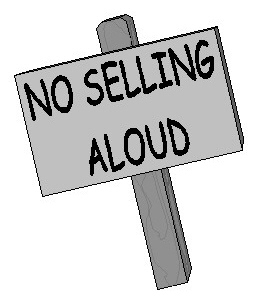|
One Time Offer (OTO)
This is the beating heart of the software. This is where you define the
offers that will be shown to new customers/members immediately after they've
completed the registration page. With most membership sites, this is where
a large chunk of your money will be made. If a member ignores your emails
and never logs in more than once, they will never see your subsequent
offers. But EVERY member, no matter what their level of interest in your
site, is guaranteed to see your OTO.
Rationally then, you want to spend a considerable amount of time crafting
this part of your offer.
As an aside, although I will use the acronym 'OTO' throughout this
section, you're not forced to make your offers show only the once. Your
offers CAN be shown repeatedly, although you will lose the 'scarcity'
effect that comes with an offer that won't be repeated.
OTOs are so widely used these days - especially in the Internet Marketing
niche - that many of your new members will be expecting you to make them
an offer. That isn't to say that they've become less effective, but it
does mean that you need to work hard to craft an enticing and valuable
offer.
Ideally, your offer should be so good, and the price so reasonable, that
it will almost be painful for your members to turn you down. Examine the
offer you've put together and, if you can't see the pain, then you need to
improve your OTO. There are a number of things you can add to your offer
that will enhance the appeal. Here are just a few ideas to get you
started:
# Money-back guarantee.
# Additional (related) bonuses.
# Priority (VIP) customer support.
# A private members forum.
# Access to other membership sites that you own.
# Free updates, as they become available.
# Private label rights for the product.
# Rebranding rights for the product.
# Source code rights for the product.
Don't think that you can just throw additional items on the offer to make
it take off - you need to be smarter than that. Remember, it's not just
about MORE, it's about MORE VALUE.
Which brings us nicely to the 'Number 1' rule for every OTO you ever
produce'
Keep It Relevant
 A
big proportion of my readers just read the sub-heading, nodded their head
in agreement, and skipped ahead. If you're still with me, then I'll
elaborate. A
big proportion of my readers just read the sub-heading, nodded their head
in agreement, and skipped ahead. If you're still with me, then I'll
elaborate.
Like it or not, an OTO interrupts the new member, and delays them from
getting them where they want to be' inside your members area, accessing
your products. Your new customer has purchased or registered because
they're eager to get at what you're offering; if you're going to slow them
down, you'd better have a VERY good reason for doing so.
Trust me when I say, if your OTO isn't extremely relevant to your main
offer, then you're tripping yourself up and shooting yourself in the foot
all at the same time (this is easier to do than it sounds). If you create
an irrelevant OTO, then you're going to make few (if any) sales, and you
also stand a good chance of annoying your customer in the process,
damaging your fledgling relationship.
Picture the scene:
You're at the fairground and you spot a stall offering FREE ice-cream. It
sounds a little too good to be true but you can see other people leaving
with a nice looking cornet so you join the queue. The vendor is about to
hand over your freebie when, he suddenly puts the ice-cream to one side
and tries to sell you a coffee table.
What the..?
Yes, it's a very nice looking, and very reasonably priced, coffee table,
but all you care about right now is that you're salivating at the thought
of your promised frozen dessert and it hasn't yet been forthcoming.
Naturally you decline the offer, as well as the downsell of a pack of
coasters, and leave with your ice-cream, feeling a little confused by what
just happened.
Yes, it's a silly example, but you get the point, right? Just because an
irrelevant offer is a good offer, it's still an irrelevant one. What
should the vendor be offering as an upsell to a free ice-cream? How about
offering to enhance your ice-cream with hot fudge sauce and a handful of
fresh cherries for just 50 cents? How about a whole tub of the ice-cream
for just one dollar? If you come back later, a tub of ice-cream costs
$2.99, but right now, you can have it for just one, measly, dollar. And
maybe he offers to throw in some hot fudge sauce, and fresh cherries as a
bonus!
See the difference? It's relevant and, most importantly, the vendor is
offering you a way to enhance the original offer. The ice-cream alone is
great, but just think how much better it could be'
Once you get yourself into this line of thinking, figuring out your OTOs
is simple. If the initial offer is an eBook, the OTO could be a set of
complementary videos. If the initial offer is a set of videos, the OTO
could be a set of bonus videos that complete the package.
Say to yourself, 'My
is great, but how much more effective would it be if I also
gave you'' Complete that sentence and you have yourself a worthy OTO. All
that's left to do is refine the offer and select the right price.
Relevancy is less important with subsequent login offers because the
member's frame of mind is different. They're not quite so single-minded as
they are when trying to obtain your initial offer and, additionally,
they're now accustomed to seeing your offers and think of it as part of
the process, rather than an obstacle or a barrier to getting to where they
want to be.
A relevant offer is always the best kind of offer, but it's never more
important than with that initial OTO.
Smoothly Does It
 The
second rule to obey when crafting your OTOs is to make a smooth transition
from registration, to OTO, to the members area. Remember, an OTO is
essentially an interruption. Relevancy will greatly reduce the likelihood
of irritating your customer but almost as important is how easily you flow
from one page to the next. The
second rule to obey when crafting your OTOs is to make a smooth transition
from registration, to OTO, to the members area. Remember, an OTO is
essentially an interruption. Relevancy will greatly reduce the likelihood
of irritating your customer but almost as important is how easily you flow
from one page to the next.
What you're trying to avoid here is a situation whereby the customer sees
the OTO and, instead of examining the offer, they hit the 'back' button
thinking they've clicked on the wrong link or been directed to the wrong
page. The pathway to your members area should seem like a nice
stream-lined corridor, not a confusing maze of dead-ends and u-turns.
The easiest way to make the offer flow is to put a friendly, visible
message at the top of your OTO, just above the headline, that reassures
the user that they are in the right place, and that they're only seconds
away from the members area. Try something along these lines:
You are just seconds away from your
.
Your
is on the next page.
Almost There! But before you go to the members area'
Tip: create special OTO design templates for each
site, One of the things we have been doing is having our design team
create special one time offer templates.
Always Downsell
Here's a fun game you can try one time. Launch a membership site with an
upsell and a downsell. After a couple of weeks, total up all the money you
made from downsell sales and realise that the number you're looking at is
how much money you would NEVER have seen if you hadn't included a
downsell. Play this game once and you'll never neglect to make a downsell
offer again.
I never understood the reluctance to include a downsell offer in your OTO
process. If I had to guess I would probably say it's because people don't
understand how easy it is to do, as well as how much extra money it can
bring in. Some have this idea that you can start with an upsell and then
figure out a downsell a few months down the line. Please, please, please
don't make the mistake of thinking that a downsell offer is just a
finishing touch, or some kind of luxury extra for marketers who have it
all figured out.
A downsell offer is really easy to figure out; simply remove one or more
of the elements that make up your OTO, and offer a reduced price. Don't
worry about trying to put a value on each part of your offer to keep the
prices balanced. The removing of an element from your offer is primarily
about being able to offer a reason for offering a lower sale price. Just
remove something and slash the price by enough to produce an offer to
which it's really hard to say 'no'.
You can test different price reductions, but I recommend starting with at
least a 50% cut.
Give It Away' Make Money
 The
OTO facility that makes up a core part of the LFM philosophy is an
extremely effective way to give something away on the front-end and then
make some money on the back-end. It's just easier this way. If you want to
get into the science, then it's to do with the power of consistency. Once
someone has said 'yes' to you on one offer, they're far more likely to say
'yes' on the second offer. Even if the first offer is free and the second
offer costs money. The
OTO facility that makes up a core part of the LFM philosophy is an
extremely effective way to give something away on the front-end and then
make some money on the back-end. It's just easier this way. If you want to
get into the science, then it's to do with the power of consistency. Once
someone has said 'yes' to you on one offer, they're far more likely to say
'yes' on the second offer. Even if the first offer is free and the second
offer costs money.
A great example of this was the time I tried to sell tickets to view my
seminar online via a live feed. The result? Zero sales. I reorganised the
offer so that the tickets would now be given away for free, followed by an
OTO for a set of the seminar DVDs. The result? Many sales.
Think about that for a moment or two. I made more money with a free offer,
plus an OTO, than with a straight-forward sales pitch! It bears repeating
that your OTO must be relevant and you will probably need to experiment
with the pricing to find the right combination but, sometimes, giving it
away just makes perfect sense.
Another great argument for using the Free + OTO strategy is its power as a
list building mechanism. Whether or not your new members purchase your
OTO, you're adding new customers to your list, to which you can make
subsequent offers through login offers. I would rather have 100 new free
members to one of my websites, than 500 subscribers via an old-fashioned
list-building form. Why? Because membership customers are more profitable
than email list customers.
If you don't mind defacing your book, go and get a pen and highlight this
whole section. This is another one of the core reasons why the LFM
strategy outperforms just about every other marketing strategy you can
name, and it's crucial that you understand this simple truth:
With some exceptions, people use a throw-away email address to register
onto a mailing list, but use their personal, most direct, email address
when registering for a membership site.
The reason for this is easy to deduce. When you join a regular mailing
list, customers can use a duff email address to get the free offer and
then never have to use the address again. But with a membership site,
everyone knows you're going to get a login username and password that you'll
probably want to keep. If you can communicate that there will be reasons
to log in on more than one occasion, then most people will want to use a
'good' email address so they don't end up with access problems further
down the line.
The bottom line is that membership registration takes a little more
commitment then registering to a mailing list. And that little bit of
commitment makes for stronger, more interested, customers.
|